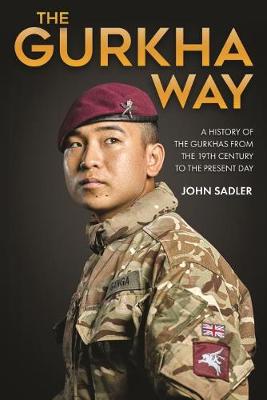Fifteen miles north of Kathmandu stands the town of Gorkha, a high and imposing place with the sweeping, immensity of the Annapurna Range behind. Crowning the settlement, is the Gorkha Durbar palace and fortress, complex and mysterious. This is where the Gurkha story begins. The 18th century ruler Prithvi Narayan fought campaigns against neighbours and the British, then The John Company. From the outset, his Goorkha warriors were renowned for courage, steadfastness and aggression. It was a very tough fight. After peace was declared in 1816 both sides had developed a considerable respect for each other. Moreover, the British had appreciated that these tough mountain fighters would make excellent soldiers. A partnership was born. Goorkhas became enthusiastic recruits and, very soon, trusted allies. The partnership survived the Indian Mutiny of 1857. They became indispensable, fighting continually on both the North West and North East frontiers and in the jungles of Burma. The Khyber Pass, narrow umbilical through harsh tribal territories, historically ungovernable, made famous by Rudyard Kipling, would keep the Gurkhas in constant action for ninety years.
During World War I the Regiment fought a very different type of war. In the rain-swept, mud-laced, makeshift maze of trenches, they somehow held their own, never giving ground despite overwhelming enemy firepower and numbers. They paid a fearful price; brave battalion after brave battalion was decimated.
When World War II began, Britain could deploy some 20 Gurkha battalions. Disaster at Dunkirk spurred the need to recruit and this was soon increased to a total of 45 - in all two million men of the Indian Army would serve and 250,000 of these were Gurkhas, young men streaming down the mountainsides to volunteer. They were deployed most significantly in North Africa; the final fall of Tobruk, the 'Gazala Gallop' and 'Msus Stakes' would result in very high losses. Gurkhas served with distinction in the Italian Campaign and the attritional bloodbath of Monte Casino. They were also in the thick of the fighting in the Far East. The decisive battles of Imphal and Kohima were followed by a brilliant blitzkrieg in Burma which saw the Japanese broken and driven out before their final capitulation.
Post-war and the retreat from empire saw a swingeing cut in overall numbers. But the Ghurkas have remained at the cutting edge, making integral contributions to many operations including the Falklands and latterly in Afghanistan.The Gurkhas have a unique place in British history as they're both a key component of the modern British army and yet a link to an imperial past, the last real connection remaining to the Raj. But they also remain highly relevant to modern challenges; with over 200 years' experience fighting asymmetric, counter insurgency and hybrid warfare they are needed more than ever.
John Sadler tells the exciting, dramatic story of the Ghurkas from beginnings to the modern day, through interviews, unpublished diaries and correspondence, examining the unique Nepali society, the soldiers themselves together with wives and families, and what the future holds.
- ISBN10 1612007503
- ISBN13 9781612007502
- Publish Date 15 June 2021
- Publish Status Cancelled
- Publish Country US
- Imprint Casemate Publishers
- Format Hardcover
- Pages 320
- Language English
